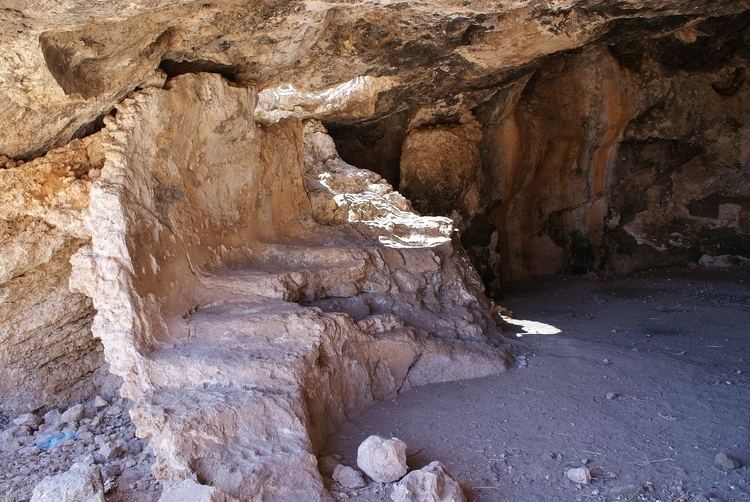Local time Sunday 8:38 AM | Population (2015) 710 Founded Bronze Age, 1st century | |
 | ||
Weather 14°C, Wind W at 8 km/h, 78% Humidity | ||
Yodfat (Hebrew: יוֹדְפַת), is a moshav shitufi in northern Israel. Located in the Lower Galilee, south of Carmiel and in the vicinity of the Atzmon mountain ridge, north of the Beit Netofa Valley, it falls under the jurisdiction of Misgav Regional Council. In 2015 it had a population of 710.
Contents
Map of Yodfat, Israel
Yodfat is named after the Second Temple-era town of the same name and is situated to the north of the archaeological mound. Yodfat was established in 1960 by graduates of the Hebrew Reali School of Haifa.
Antiquity
Ancient Yodfat (Jotapata), situated to the south east of the modern moshav, is mentioned in the Mishna as a fortified Jewish village dating from the time of Joshua, corresponding with the Iron Age. It has also been linked to [Ia]-at-bi-te of the Assyrian Annals or Jotbah mentioned in the Bible (2 Kings 21:19). Archaeological exploration of the site, however, have thus far revealed a modest village established some time during the Hellenistic period, between the 4th and 3rd centuries BCE. As the Hasmonean kings extended their influence into the Galilee during the last decades of the 2nd century BCE, a change of population occurred at Yodfat and the village was populated by Jews.
The Great Revolt
By the first century CE Yodfat had expanded to encompass an area of 50 dunams (13 acres). Its siege and subsequent destruction in 67 CE are described in Josephus Flavius' The Wars of the Jews, his chronicle of the Great Jewish Revolt against the Romans. Led by future emperor Vespasian, three Roman legions — Legio V Macedonica, X Fretensis, and XV Apollinaris — besieged Yodfat, meeting strong Jewish resistance. After 47 days the city fell by treachery, and Josephus describes the death of 40,000 Jews and the enslavement of 1,200 women and children. Yodfat was razed and burnt on the first of the Hebrew month of Tammuz. While a few dozen remaining fighters committed suicide, Josephus managed to survive this pact and was captured by the Romans.
After the fall
After its capture by the Romans, Yodfat was re-established at a nearby site by refugees from Jerusalem, among them the priestly family of Miyamin. This town is mentioned in the Talmud as the home of Rabbi Menachem of Jotapata (Zev. 110b). It flourished for another 300 years, before being destroyed once again. After that, the village lay in ruins until 1960.
Modern times
Yodfat was re-established in 1960 by graduates of the Hebrew Reali School of Haifa. It is currently an agricultural Jewish community, located about 1 km north-west of the ancient ruins.
The modern village was built by traditional Jews, seeking to preserve traditional values in parallel to agricultural work. At first, the village was an observation site of the JNF, while its inhabitants were mostly the JNF employees. Later, the village became an agricultural society, with most of its residents working the nearby lands. By the 1990s, the village turned into a larger communal center, with a larger variety of professions for its residents. Today it includes 160 families.
Archaeology
Ancient Yodfat was first identified in 1847 by Ernst Gustav Schultz (1811–1851), Egyptologist and Prussian consul in Jerusalem, using the geographical and topographical descriptions provided by Josephus, as well as by the phonetic similarity to the adjacent ruin of Khirbet Shifat. Six excavation seasons were carried out at the site between 1992 and 2000, under the direction of Mordechai Aviam on behalf of the Israel Antiquities Authority and the University of Rochester. These have revealed remains of fortifications, cisterns and extensive evidence of the large scale battle which took place at Yodfat, including a mass grave containing human remains.
Economy
In 1968, Yodfat established a flower bulb nursery which exports millions of bulbs throughout the world. The nursery employs forty people and has an R&D facility for developing new hybrids, including the Ornithogalum dubium and Cyclamen persicum. Yodfat's Jerusalem hybrid F1 anemones and Galilee hybrid F1 anemones are hand-pollinated and unique in the cut-flower trade.
A short walk from Yodfat there is the "Goats with the Wind farm", a family-run organic goat cheese farm and restaurant, founded in 1993 by former residents of Yodfat. The farm's walls and buildings were constructed over time out of stones collected from the surrounding area.
